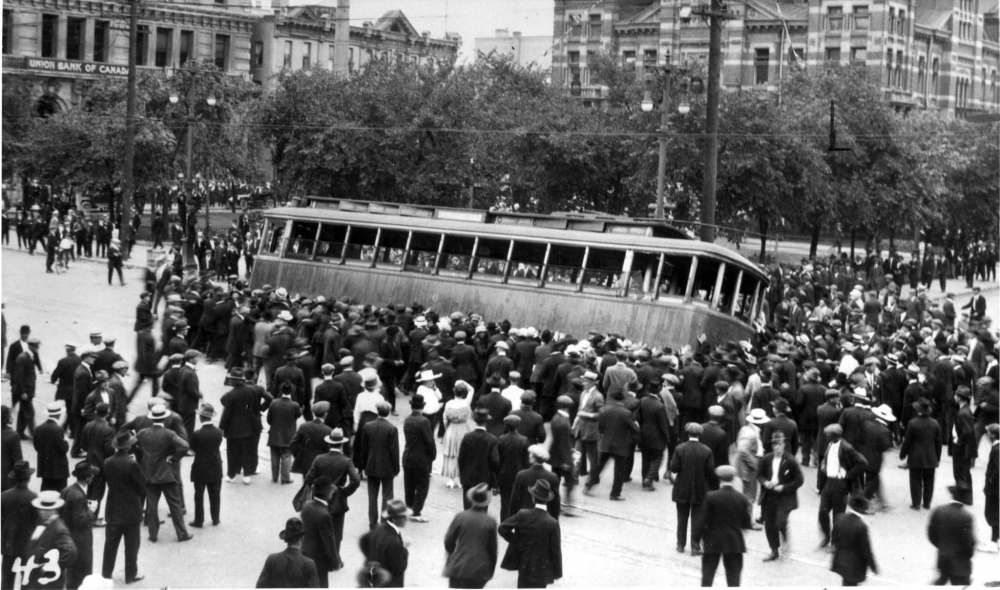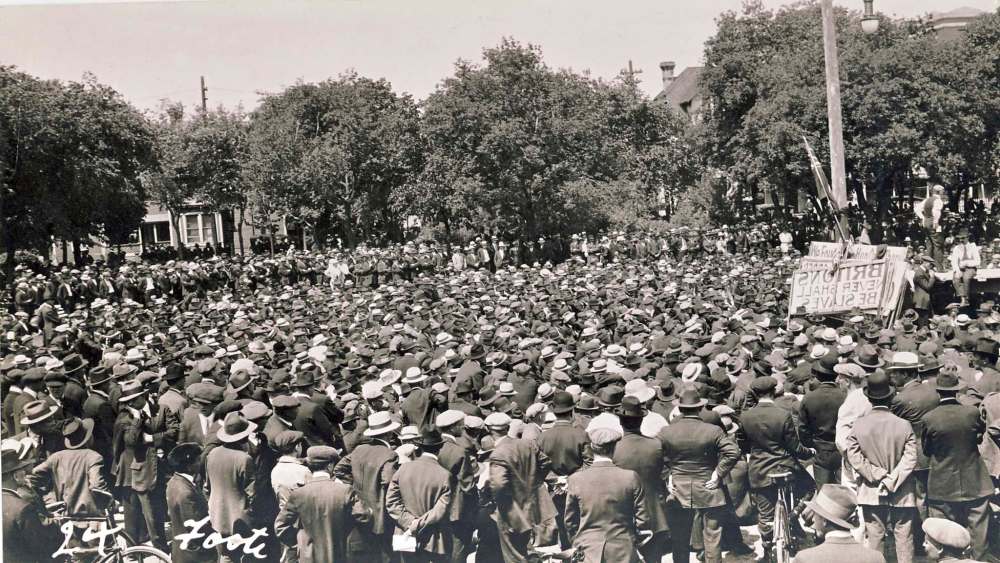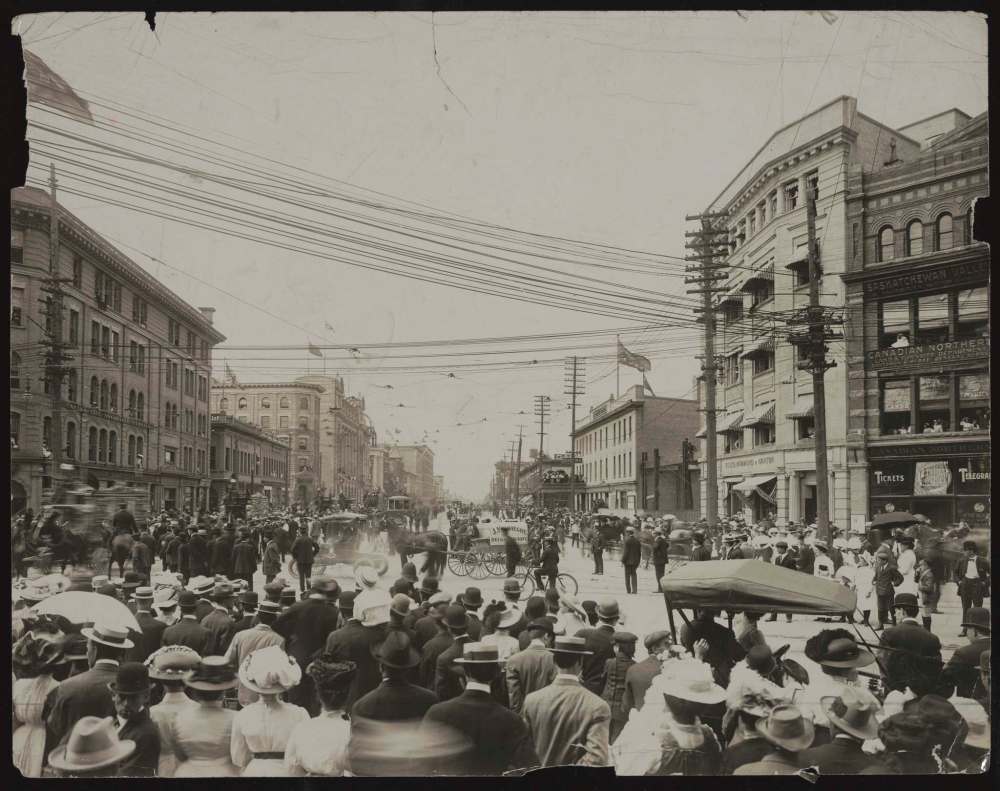Manitoba Museum exhibit puts spotlights on centenary of General Strike
Read this article for free:
or
Already have an account? Log in here »
To continue reading, please subscribe:
Monthly Digital Subscription
$0 for the first 4 weeks*
- Enjoy unlimited reading on winnipegfreepress.com
- Read the E-Edition, our digital replica newspaper
- Access News Break, our award-winning app
- Play interactive puzzles
*No charge for 4 weeks then price increases to the regular rate of $19.00 plus GST every four weeks. Offer available to new and qualified returning subscribers only. Cancel any time.
Monthly Digital Subscription
$4.75/week*
- Enjoy unlimited reading on winnipegfreepress.com
- Read the E-Edition, our digital replica newspaper
- Access News Break, our award-winning app
- Play interactive puzzles
*Billed as $19 plus GST every four weeks. Cancel any time.
To continue reading, please subscribe:
Add Free Press access to your Brandon Sun subscription for only an additional
$1 for the first 4 weeks*
*Your next subscription payment will increase by $1.00 and you will be charged $16.99 plus GST for four weeks. After four weeks, your payment will increase to $23.99 plus GST every four weeks.
Read unlimited articles for free today:
or
Already have an account? Log in here »
Hey there, time traveller!
This article was published 21/03/2019 (2463 days ago), so information in it may no longer be current.
The Manitoba Museum is bringing the 1919 General Strike back to life.
“This coming May 15 will mark the 100th anniversary of a unique moment in Canadian history, when 35,000 Winnipeg citizens demanded change by staging a massive general strike,” museum curator of history, Roland Sawatzky, told staff and labour rights supporters Thursday at the unveiling of an interactive exhibit to mark the centenary.
Remembering the strike
Manitoba unions and other organizations are hosting a number of events this year to mark the centenary of the 1919 General Strike. Here’s a partial list so far
Manitoba unions and other organizations are hosting a number of events this year to mark the centenary of the 1919 General Strike. Here’s a partial list so far.
May 11 — Manitoba unions are hosting a 1919 social, presented by Myers LLP, at the Ukrainian Labour Temple (sold out).
May 15 — Winnipeg General Strike Centennial Gala Dinner at RBC Convention Centre, presented by the Manitoba Building Trades.
May 15 — One-time performance of the Winnipeg Labour Choir, revived for 100th anniversary, at the Ukrainian Labour Temple. Tickets are $10. Doors open at 6 p.m. Performance at 7:30 p.m.
May 25 — Manitoba unions will celebrate the Solidarity Forever Parade, presented by United Food and Commercial Workers Local 832. Route runs from the Exchange District to the legislature.
May 28-30 — Unifor plays host to the Prairie Regional Council conference. About 250 delegates from Manitoba, Saskatchewan and Alberta are expected to attend.
June 18-25 and July 2-5 — Rainbow Stage is performing Strike! The Musical.
The movie Stand! — based on the musical Strike! — is finished, but a release date has yet to be announced.

The walkout stopped work, halted factory production and stalled an entire city, as workers tried to force business to recognize organized labour unions and improve wages and working conditions. For more than a month, the shockwaves reverberated across the country, triggering a rise of unionism and sympathetic labour action from Nova Scotia to British Columbia and inflamed fears of a Bolshevik-style revolution.
The strike ended June 21, 1919, on “Bloody Saturday.” The city’s mayor, Charles Gray, read the Riot Act, mounted police charged the unarmed crowds, a striker was shot dead, another died later of his wounds, strike leaders were arrested and the military patrolled the city’s streets.
“The Dominion of Canada had bared its teeth and the strike was called off,” Sawatzky said at the entrance to the exhibit.
“The strike was a failure, but many of its leaders entered the political domain. Labour slowly formed political parties, affecting public opinion and pressuring other parties to take labour issues seriously.”
Among them: John Queen, a strike leader, who later served as Winnipeg mayor (1935-36, 1938-42). He was also elected to the Manitoba legislature while serving a prison sentence related to strike activity.
And Les Paulley, a 17-year-old labour supporter who witnessed first-hand the police charge on the strikers.

“I can remember him saying something to the effect that he managed to pick up a rock to throw at them. Then he disappeared from sight as quick as he could because of the violence,” said Paulley’s son, Lance, who took in the opening tour with a half-dozen relatives.
The 1919 strike is sunk deep in the family’s roots.
Les Paulley would stay active in the labour movement the rest of his life, putting in his hours on the job at the Canadian Pacific railyards in Winnipeg and organizing unions behind the scenes.
His brother, Russ Paulley, would emerge as a labour and political leader, serving as an MLA for more than 20 years and was the first leader of Manitoba’s New Democratic Party.
The exhibit brings the chaos and the tension of the era back to life. Depression, mass unemployment and inflation, the rise of industrial unionism, the Russian Revolution, all of it contributed to the post-First World War labour unrest, the tinder to the spark for the 1919 strike.

Propaganda inflamed tempers. Employers banded together as the Citizens’ Committee of One Thousand and ran off a daily newspaper, blaming the strike on Eastern European agitators they dubbed “enemy aliens.”
Those elements play out in displays of artifacts, visual projections and original film footage. A short documentary can be viewed at the Allen Theatre, along with oral history excerpts at four locations in the museum’s Urban Gallery.
Dramatized dialogues bring to life different perspectives of the strike: a former soldier argues with an immigrant striker, a maid tries to calm the lady of a wealthy household, labour leader Helen Armstrong rallies an angry young striker.
“This exhibition isn’t comfortable. As you explore the different buildings and rooms (that make up the Urban Gallery), you’ll be reminded of the divisions in our city in 1919, a time when the old foundations of society were trembling underfoot,” Sawatzky said.
“It still resonates because people see unions under threat, either through automation or globalization or the gig economy. A lot of people take unions for granted, and it’s really important to remember unions are the bedrock for the standard of living of Canadians today.”

alexandra.paul@freepress.mb.ca








